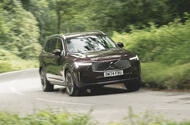Why Is Volvo Sticking With the XC90 Instead of Going Fully Electric?
For years, Volvo has been one of the loudest voices in the push toward electrification, famously pledging to go all-electric by 2030. But reality, as it turns out, is a bit messier than a press release. The company’s CEO recently confirmed that a third-generation XC90 is on the way, despite earlier plans to phase out combustion engines entirely. So, what’s behind this pivot?
The answer boils down to timing and flexibility. Volvo’s original plan hinged on the success of its large electric SUV, the EX90, which was supposed to take over from the XC90. But with delays in EX90 production—thanks to software hiccups and supply chain snags—the current XC90 got a stay of execution. And as global EV adoption proves patchier than expected, Volvo is hedging its bets. The company recognizes that many drivers, especially in Europe, still want the security and convenience of a plug-in hybrid with real electric range. In short, Volvo’s not abandoning its electric ambitions, but it’s making room for a more gradual transition.
What’s Changing With the Next-Gen XC90? Will It Be a Plug-In Hybrid?
The next XC90 is shaping up to be a very different animal. Instead of a traditional hybrid or a pure EV, Volvo is leaning toward a long-range plug-in hybrid (PHEV) setup—something that’s already rolling out in China with the new XC70 PHEV. That model boasts an impressive 112-mile electric-only range, a figure that blows most current PHEVs out of the water.
Why does this matter? Because European emissions rules are tightening, and company car tax rates are about to get a lot tougher on plug-in hybrids with small batteries. The current XC90’s battery, at just under 15kWh, simply doesn’t cut it anymore. By moving to a larger battery—potentially 21kWh or even 40kWh, as seen in the XC70—Volvo can keep the XC90 relevant for both eco-conscious families and fleet buyers who care about running costs.
How Is Volvo Navigating Global Challenges Like Tariffs and Supply Chains?
Volvo’s recent history has been a masterclass in corporate agility—or at least, in learning to pivot quickly when things go sideways. The company took a nearly £900 million financial hit after scrapping plans to sell its China-built ES90 electric sedan in the US, thanks to steep new tariffs. Add in the EX90’s software delays, and you’ve got a recipe for some serious boardroom headaches.
To counter these challenges, Volvo is shifting production strategies. The XC60, for example, will start rolling out of the Charleston, South Carolina plant in 2027, sidestepping US import tariffs. Meanwhile, production of the smaller EX30 electric SUV for Europe is moving from China to Belgium, and the upcoming EX60 will be built in Sweden. This multi-country approach helps Volvo dodge trade wars and stay nimble as the global car market keeps shifting underfoot.
What Platform Will the New XC90 Use, and Why Does It Matter?
Underneath all the talk of batteries and tariffs is a quieter revolution: platform sharing. The new XC90 is likely to ride on the same Scalable Modular Architecture (SMA) that underpins the XC70 PHEV. This platform is designed to accommodate bigger batteries and more advanced hybrid systems, which means better range and more flexibility as regulations evolve.
For buyers, this translates into a car that’s more future-proof. Want to drive mostly electric during the week but need the reassurance of a petrol engine for long trips? The new XC90’s platform is built for exactly that kind of versatility. It’s a smart move, especially as many families aren’t quite ready to go all-in on electric just yet.
How Does Volvo’s Approach Stack Up Against Other Premium Brands?
Volvo isn’t alone in rethinking its electrification timeline. Many premium automakers are finding that the road to zero emissions is full of unexpected detours. What sets Volvo apart is its willingness to be transparent about these challenges. Instead of doubling down on a single strategy, the company is openly adapting—whether that means extending the life of a popular hybrid, shifting factories, or tweaking battery sizes to meet new rules.
Recent data from the European Automobile Manufacturers Association shows that plug-in hybrids still account for over 8% of new car sales in Europe, and that number is holding steady even as full EV growth slows in some regions. Volvo’s bet on a longer-range PHEV XC90 isn’t just a stopgap—it’s a calculated response to real-world consumer demand.
What’s the Upshot for Drivers Considering the XC90 or Its Rivals?
If you’re in the market for a family SUV, the next-gen XC90 is shaping up to be a compelling option. You’ll get the flexibility of a true long-range plug-in hybrid, the latest safety tech, and a platform that’s ready for whatever the next wave of regulations brings. And with Volvo’s ongoing efforts to localize production, you can expect fewer supply hiccups and more stable pricing.
The big takeaway? Volvo’s XC90 strategy isn’t about perfection—it’s about smarter adjustments. Start with one change this week, and you’ll likely spot the difference by month’s end.

